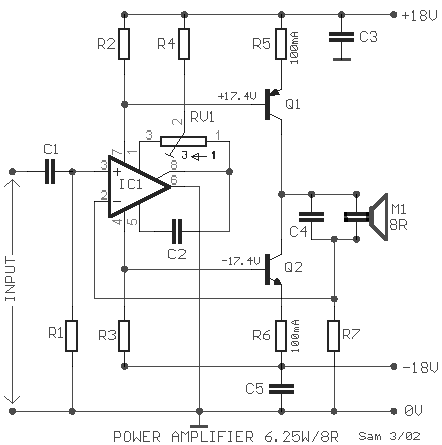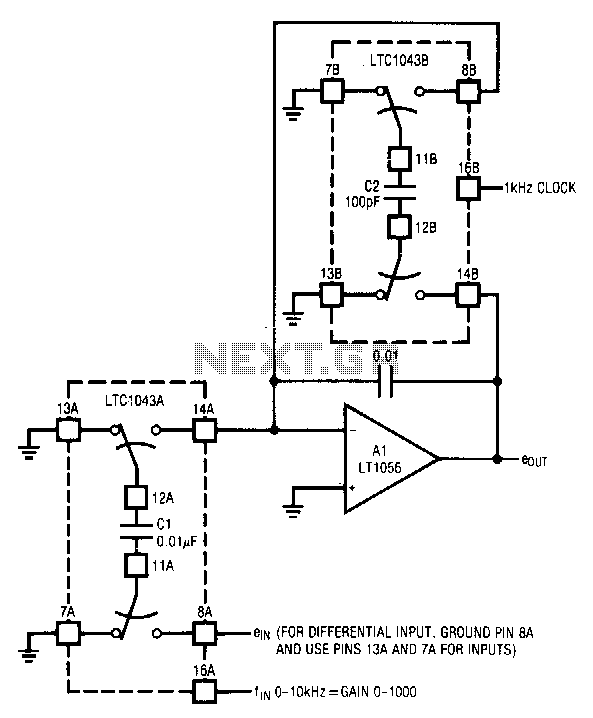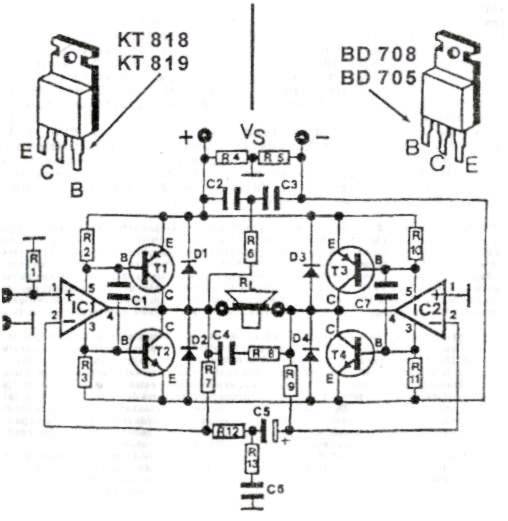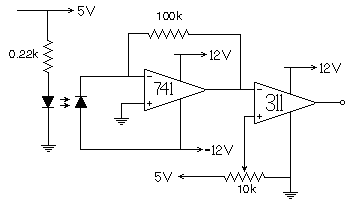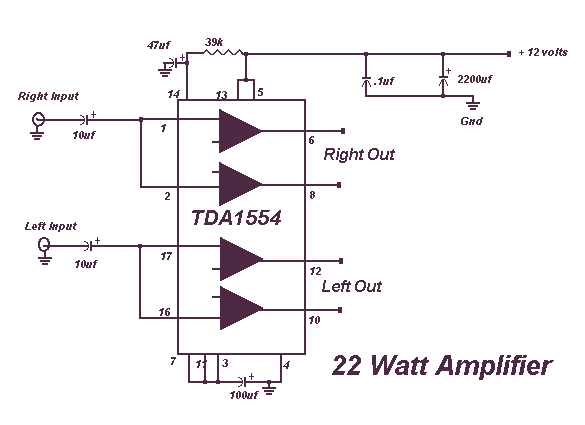
High input impedance amplifier CA3440
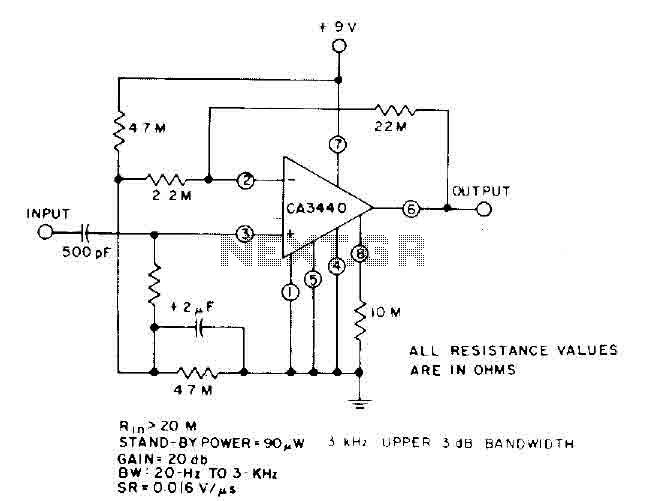
This circuit utilizes the low power leakage, high input impedance, frequency response, and capacitance characteristics of the CA3440 operational amplifier. Only one input coupling capacitor of 500 pF is required to attain a -3 dB low frequency response at 20 Hz.
The described circuit leverages the unique properties of the CA3440 operational amplifier, which is known for its low power consumption and high input impedance. These features make it particularly suitable for applications that require minimal signal loading and high sensitivity. The circuit configuration involves a single input coupling capacitor of 500 pF, which plays a crucial role in setting the low frequency response of the system.
The choice of a 500 pF capacitor allows the circuit to achieve a -3 dB cutoff frequency at 20 Hz. This is essential for applications that necessitate the filtering of low-frequency signals while maintaining the integrity of higher frequency components. The -3 dB point indicates the frequency at which the output signal power drops to half of its maximum value, a critical parameter in audio and signal processing applications.
In practical terms, the CA3440's high input impedance ensures that the circuit does not significantly load the source signal, preserving the original waveform characteristics. The low power operation of the CA3440 is advantageous for battery-powered or energy-efficient designs, making this circuit ideal for portable devices or applications where power conservation is a priority.
Overall, the circuit design is optimized for low-frequency performance while taking full advantage of the CA3440's capabilities, providing a robust solution for various electronic applications requiring high fidelity and low power operation.This circuit takes advantage of the leakage of low power, high input impedance, frequency and capacity of the excellent CA3440.
The described circuit leverages the unique properties of the CA3440 operational amplifier, which is known for its low power consumption and high input impedance. These features make it particularly suitable for applications that require minimal signal loading and high sensitivity. The circuit configuration involves a single input coupling capacitor of 500 pF, which plays a crucial role in setting the low frequency response of the system.
The choice of a 500 pF capacitor allows the circuit to achieve a -3 dB cutoff frequency at 20 Hz. This is essential for applications that necessitate the filtering of low-frequency signals while maintaining the integrity of higher frequency components. The -3 dB point indicates the frequency at which the output signal power drops to half of its maximum value, a critical parameter in audio and signal processing applications.
In practical terms, the CA3440's high input impedance ensures that the circuit does not significantly load the source signal, preserving the original waveform characteristics. The low power operation of the CA3440 is advantageous for battery-powered or energy-efficient designs, making this circuit ideal for portable devices or applications where power conservation is a priority.
Overall, the circuit design is optimized for low-frequency performance while taking full advantage of the CA3440's capabilities, providing a robust solution for various electronic applications requiring high fidelity and low power operation.This circuit takes advantage of the leakage of low power, high input impedance, frequency and capacity of the excellent CA3440.
Only one input coupling capacitor of 500 pF is needed to achieve a 20 Hz, -3 dB low frequency response.
